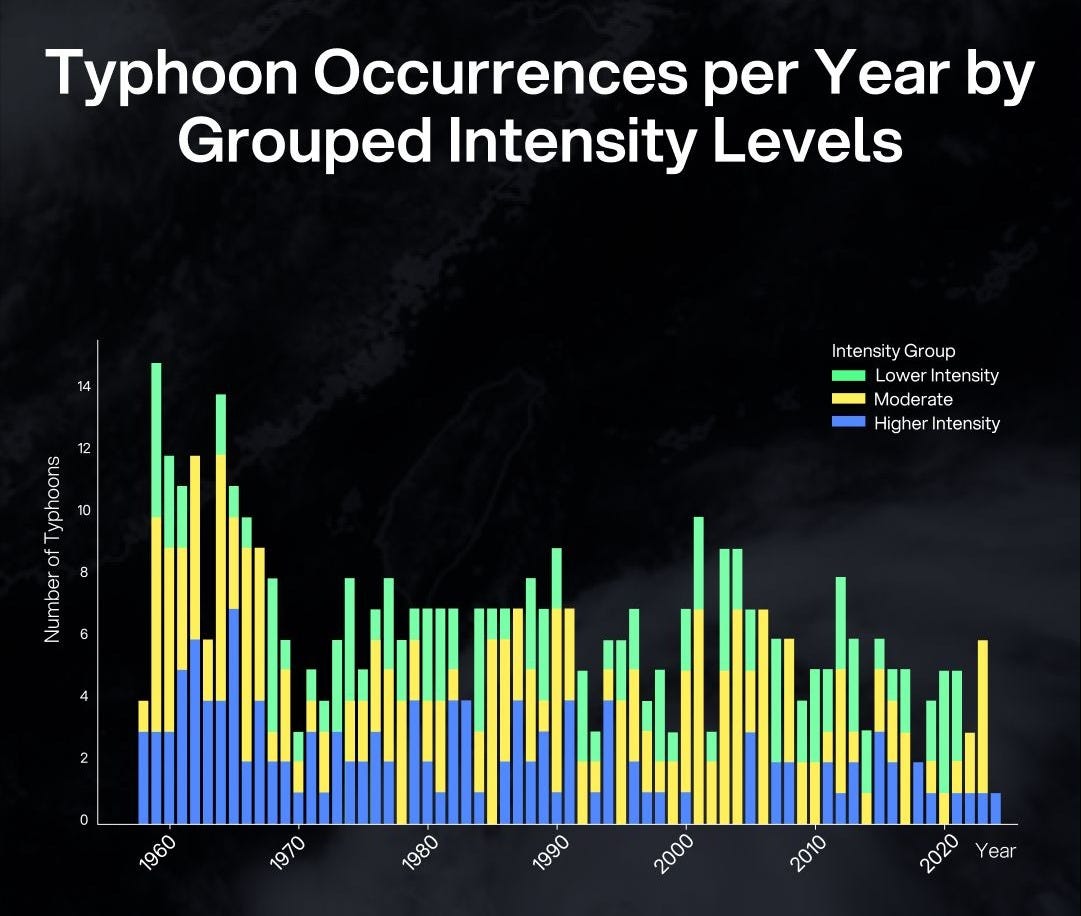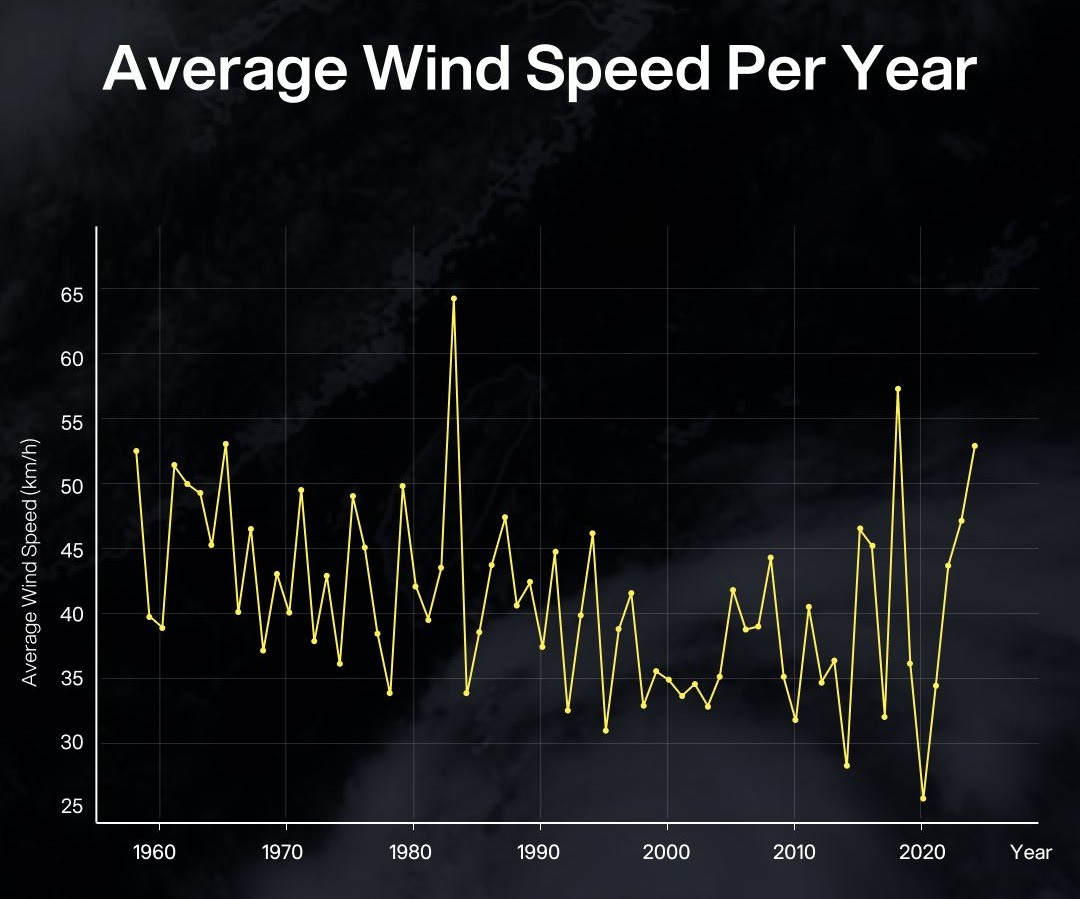Taiwan's location and geography make it highly vulnerable to frequent typhoons, increasing the risk of landslides and flooding, especially in the eastern regions.
Economic Damage: Typhoons cause significant agricultural and manufacturing losses in Taiwan, disrupting industries and burdening supply chains with costly repairs.
Infrastructure Challenges: Taiwan's steep terrain and heavy rains cause frequent landslides and flooding, damaging infrastructure, while coastal areas face storm surges and power disruptions.
Loss of Life: Despite preparedness, typhoons still cause deaths from landslides and floods, with remote regions remaining at higher risk despite early warnings and evacuations.
Changing Patterns in Typhoon Intensity Over the Decades
1950s to Early 1960s: The Era of Intense Storms
High number of typhoons, with over 14 storms in some years.
Many storms were of higher intensity, likely due to favorable oceanic and atmospheric conditions.
1960s to 1980s: A Noticeable Decline
Decline in both the frequency and intensity of typhoons.
Shift from higher to more moderate and lower intensity storms, possibly due to changing climate patterns.
1990s to 2010s: A More Even Spread
Typhoon activity became more balanced with moderate and lower intensity storms.
Some higher intensity storms returned in the late 1990s but remained less frequent than in earlier decades.
Recent Years
Continued decline in the number of typhoons, with most being moderate or lower intensity.
Fewer high-intensity storms, likely due to changing environmental factors such as ocean temperatures.
Annual Typhoon Wind Speed
1950s to early 1980s: High and fluctuating wind speeds, averaging between 45-55 km/h, with a peak at 65 km/h in the early 1980s.
1980s to 2000: Gradual decline in average wind speeds, ranging between 35-50 km/h, with smaller fluctuations.
2000 to 2020: Stabilization of wind speeds, generally remaining between 30-45 km/h, with fewer extreme spikes.
2020 onwards: Sudden and sharp spike in wind speeds, peaking again at 65 km/h, followed by a dip and another rise, showing increased variability.
Annual Typhoon Wind Speed Pattern
The average typhoon wind speed is observed to be moving at a cyclical pattern with higher variability in recent years.
With the average wind speed reaching a recent high, it is expected for it to drop down and ease toward the next couple years.
Source
https://rdc28.cwa.gov.tw/TDB/ - Taiwan Typhoon Database




